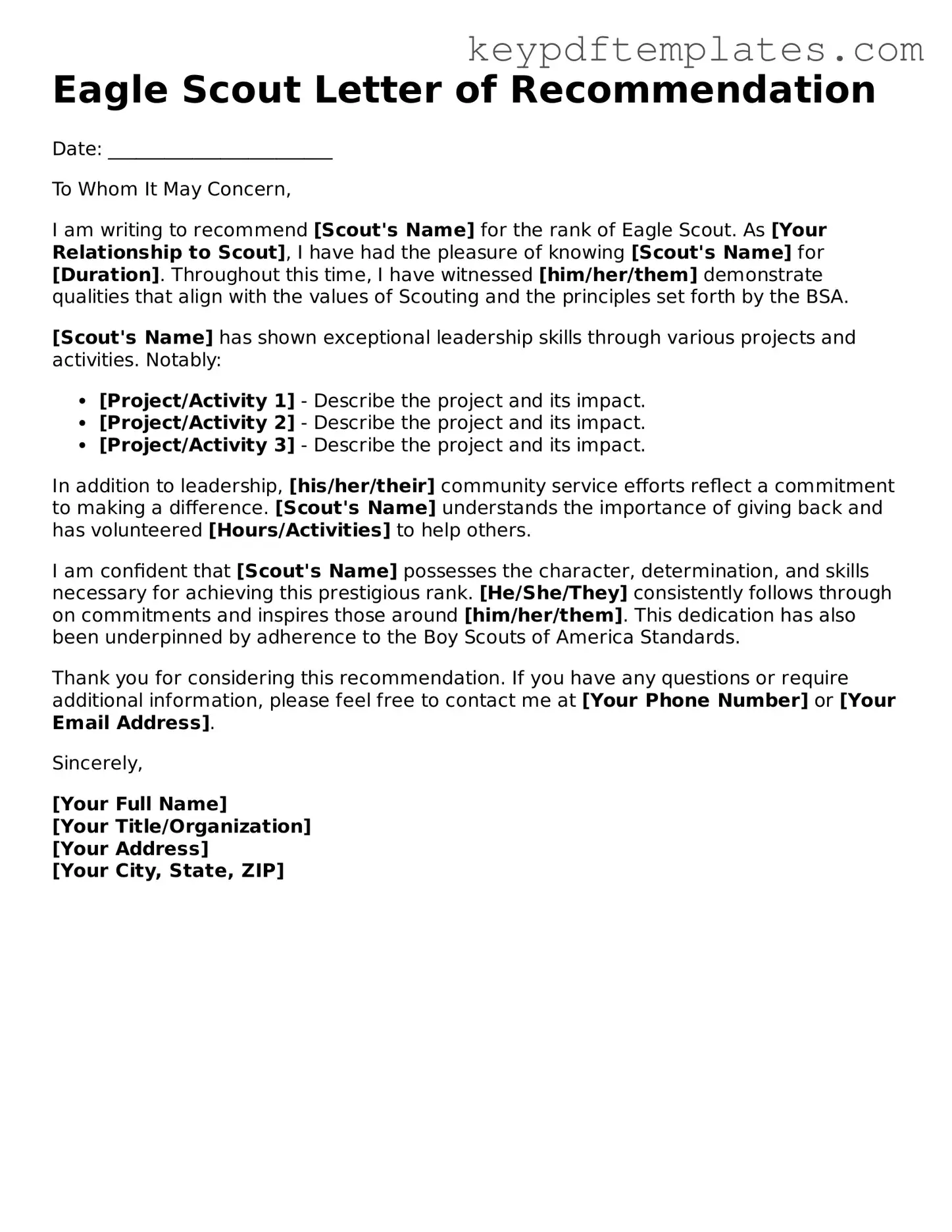Printable Eagle Scout Letter of Recommendation Template
The Eagle Scout Letter of Recommendation form is a crucial document in the journey to achieving the prestigious rank of Eagle Scout. This form allows individuals to provide insights into the character and accomplishments of the candidate, helping to highlight their leadership skills and commitment to community service. Collecting strong recommendations can significantly impact a Scout's chances of earning this esteemed honor.
Modify Document Online
